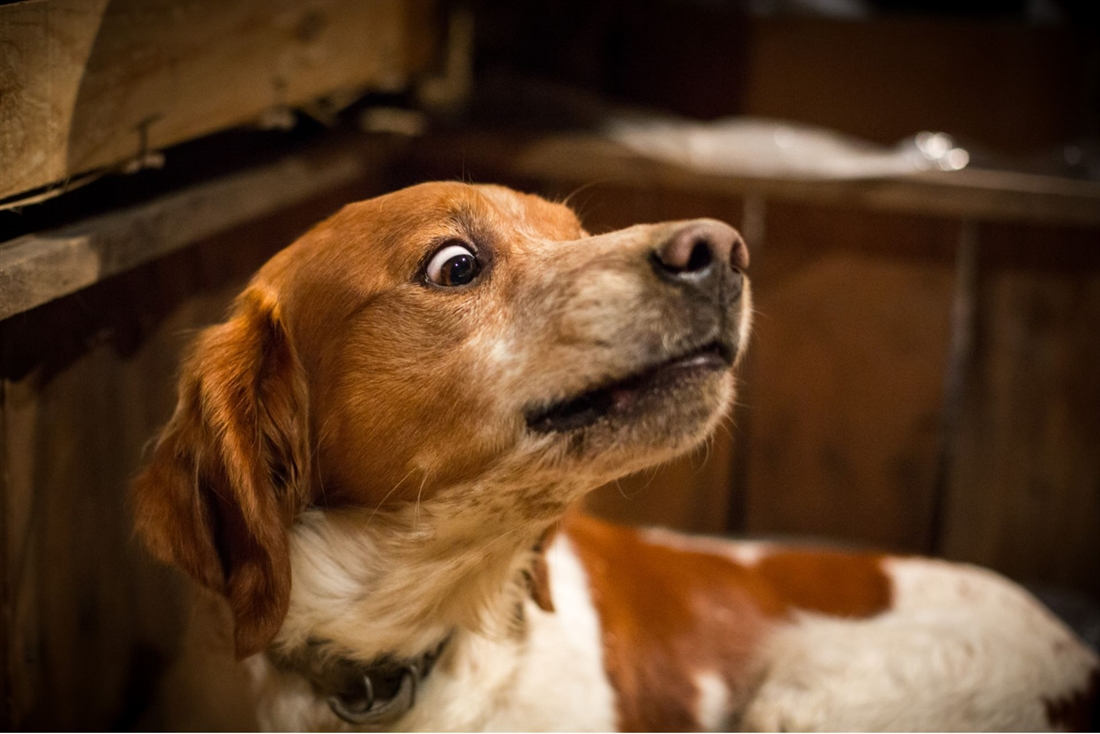Gundog behaviour: why is my dog acting aggressively?
Vet Vicky Payne explains why gundogs may occasionally display aggressive behaviours, and what to do if that situation occurs.

Something that we often take for granted in the shooting field, but which amazes other people, is how well gundogs get on. It isn’t unusual for there to be more than 10 dogs of mixed ages, sexes and breeds on our beaters’ wagon or to see several crammed into the back of the shoot Land Rover with their owners.
I remember teaching Dog First Aid to a group of kennel assistants from a PDSA centre and they were genuinely surprised that I had two entire male dogs with me and that they weren’t fighting each other! The gundog breeds have been developed to have friendly temperaments with other dogs as well as with people, so it seems particularly shocking when we do meet an aggressive gundog.
Resource guarding
This is the most common aggression issue which I am asked about in gundog breeds, particularly cocker spaniels. Most of the dogs I see are working breed dogs that have been placed into pet homes, but guarding occasionally challenges owners who have bought dogs to work. Resource guarding comes from the natural drive that our gundogs have to retrieve things. If puppies don’t learn early on to bring what they find to their person, and that the person will swap the ‘treasure’ for a treat or another toy, then some dogs will take their finds to their bed and guard them. The situation becomes worse if people chase or shout or try to grab things off the dog.
Food guarding can occur between dogs, or between dogs and people. Puppies that are fed from separate bowls and where there is always plenty of food to go around are less likely to develop food guarding around other dogs. If you have multiple dogs, they should be supervised at feeding time with bowls well-spaced out. If your dogs are fed in the house, avoid placing the bowl in a corner as this stops a dog seeing someone approaching and increases the risk of them being startled while eating.
Hand feeding baby puppies helps avoid food guarding as your dog will see people as givers of food, not takers. When you do feed from a bowl approach slowly with a higher value food and drop it into the bowl. This stops a dog worrying about people taking the food away and instead they will be happy if people come near them when eating as they might have food to add. Never take food away from a dog that is eating, it just isn’t fair and reinforces the idea that people are a threat at dinner time. If you need to get dangerous food off your dog call them over and swap for something else.
Some dogs will guard their retrieves if other dogs come too close so get birds hung up out of the way as soon as possible.
Pain
Behaviour specialists have suggested that more than 70% of the pets they see have pain as part of the reason for their problem behaviours. Chronic pain can affect sleep, making dogs less tolerant, and dogs might growl to warn other dogs to keep away if they are protecting an injury or have chronic pain.
Bites can happen if people touch painful areas such as rubbing an infected ear or handling the muzzle of a dog with dental pain. When a friendly dog suddenly starts showing aggression to people or dogs my first thought will always be pain and it feels amazing to save a dog from euthanasia just by giving some pain medication!
Reactive dogs
Some dogs, even gundogs, can become fearful of other dogs and this often manifests as lunging and snapping at dogs which come too close. This is usually from having negative experiences such as dog attacks, but can also be seen where dogs haven’t had appropriate socialisation with other dogs (such as during Covid lockdowns).
It is possible to slowly change how these dogs feel about other dogs but they need careful management on shoot days. Occasionally two dogs will just dislike each other, especially entire males of a similar age. Avoid unnecessary conflict by keeping dogs on leads when they aren’t working.
Rage
Almost any article on cockers or springers will mention ‘rage syndrome’ as an incurable inherited defect of some dogs which causes them to attack out the blue. Most dogs labelled this way do not have any such thing; instead they are frustrated working-bred dogs who have not been given an outlet for their hunting and retrieving. Usually house dogs, they have been shouted at for ‘stealing’ things and punished for growling. Punishment stops the growling but doesn’t make the dog feel better about people taking their treasures which leads to those ‘bites from nowhere’.
These dogs can be rehabilitated, especially if given a kennel to limit their mistakes and chances of biting. I have seen just a couple of true ‘rage’ cases where dogs showed a sudden switch from normal behaviour to showing signs of extreme fear such as dilated pupils, cowering, growling, and snapping. People were bitten as they attempted to comfort the dogs. I think these may be dogs with a form of hallucinatory epilepsy and studies have shown altered brain activity in some cases. These true ‘rage’ dogs are difficult to manage, though some respond to anti-epileptic drugs.
To keep gundogs the friendly sociable souls we love, breeders must consider temperament in their breeding decisions, especially now many gundogs live in the home with the family. Correct rearing of litters and training and socialisation of puppies is also vital to avoid grumpy gundogs.





